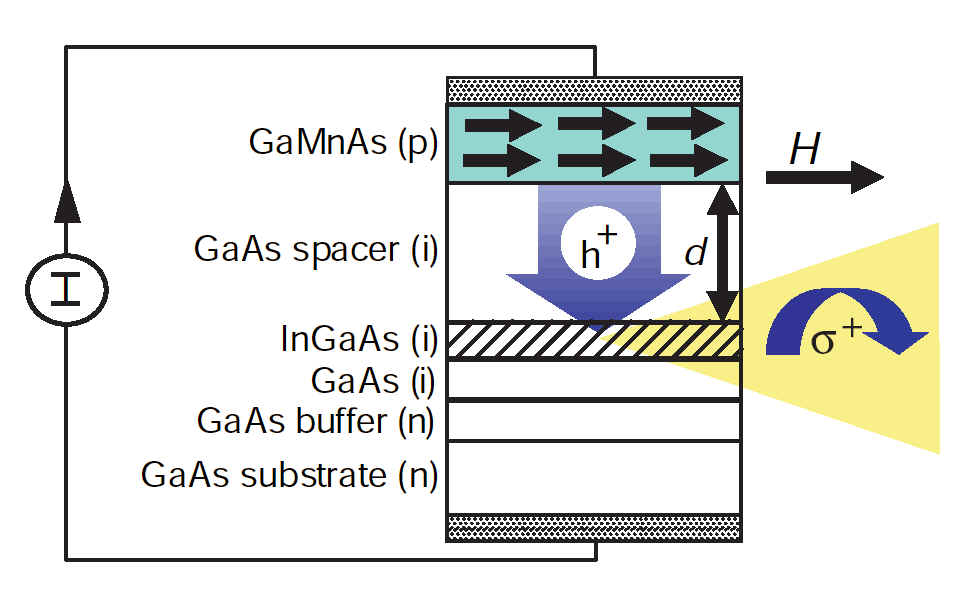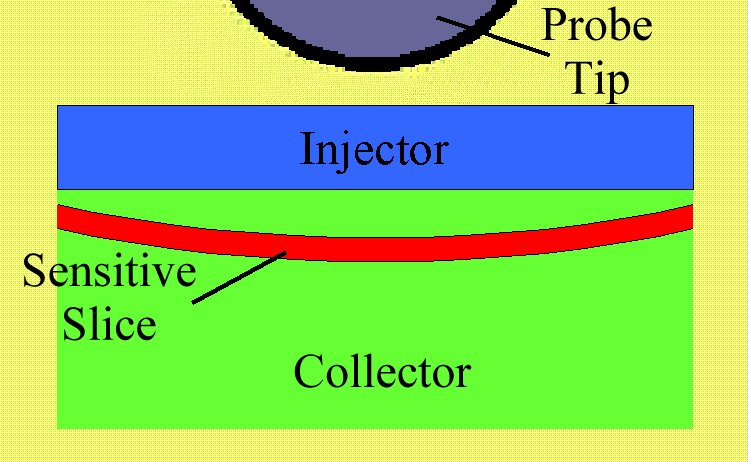|
H A M M E L G R O U P
|
Spin Electronics
Exploiting Electronic Spin for Information Processing.
|
|
Exploitation of the electronic spin degree of freedom in
solids could enable a revolutionary enhancement of the capabilities of
electronic devices. Potential
applications range from the use of ferromagnetism to incorporate
non-volatile memory into conventional electronics, to the
potential use of an individual electron spin as a quantum bit in a
quantum computer. Recent experiments have demonstrated the
feasibility of electrical injection of spin polarized currents
into semiconductors.
This represents a very significant step toward incorporating
devices based on electronic spin into conventional semiconductor
electronic devices.
An improved understanding of the dependence
of electrical spin injection properties on the device fabrication
process, the materials used, and the nature of the interfaces will
provide essential input for optimization of performance.
Furthermore, detailed understanding of the device physics will be
crucial in incorporating them into conventional semiconductor
electronics.
The MRFM provides a unique and powerful approach to measuring the
spatial and temporal decay of injected, non-equilibrium spin
polarization in electrically injected systems.
|
|
Spin Injection into Paramagnetic Semiconductors |
|
Spin Injection Across Interfaces
The injection of spin across the interface separating a highly spin polarized
injector and a paramagnetic semiconductor is a crucial element in incorporating
spin-based elements into an information processing electronic device. Such injection
has been demonstrated using both optical and electrical injection approaches.
Exploiting the coupling of circularly polarized photons to electronic excitations in GaAs
semiconductors, lasers can be used to generate spin polarized carriers and to observe
the motion of spin polarized carriers across heterointerfaces in layered structures.
However, effective incorporation of spin into electronics will require
effective electrical spin injection.
Electrical injection has been demonstrated using either a ferromagnetic semiconductor
or a hyperfine enhanced paramagnetic semiconductor as the injector.
In combination with the long spin coherence times for spins in solids this
indicates the tremendous promise of spin electronics for information processing.
|
Schematic diagram of electrical spin injection device geometry; from
Y. Ohno et al., Nature 402, 790 (1999).
|
|
MRFM Characterization of Buried Spin Injection Interfaces
Several questions crucial to the optimization and application of
spin injection devices remain unanswered. Among these are the temporal and spatial
decay rates of the injected non-equilibrium spin polarization, and
a detailed characterization of the behavior of the spin-polarized
currents in the immediate vicinity of the interface. Spatially
resolved mapping of the non-equilibrium spin polarization
resulting from a steady-state injection current will allow direct
measurement of the decay of the spin polarization as a function of
distance from the injection interface, and thus direct measurement
of the spatial decay rate. Imaging in the plane of the interface
could provide crucial insight into the lateral homogeneity. If
inhomogeneities exist, these studies would proved a detailed,
quantitative basis for modification of fabrication to improve
injection properties.
|
|
Ferromagnetic Resonance Studies of Microscopic Ferromagnets
|
Spatially resolved
Ferromagnetic Resonance
Ferromagnetic systems pose unique challenges for microscopic
magnetic imaging due to the strong interactions between the
moments which renders the resonance frequency a non-local
function of the applied magnetic field; as a consequence the
ferromagnetic dynamics are typically determined by sample
dimensions. We can observe the spatial structure of
magnetostatic modes with ~10 micron spatial
resolution. We are studying the physical mechanisms that underlie spatially resolved
ferromagnetic resonance: in the presence of a sufficiently strong
probe magnetic field the intensities of particular magnetostatic modes
of the sample are strongly enhanced, indicating a local
modification of the wavevector of magnetostatic modes selected by
the probe tip. Our work suggests that further increase of the
probe field will enable the ferromagnetic resonance modes to be
determined by the probe field independent of sample geometry.
See our MRFM publications.
|
 |
Collaborators
|



